Actor portrayal.
MASH
IS THE NEW NASH1Actor portrayal.
Nonalcoholic steatohepatitis, or NASH, is a form of nonalcoholic fatty liver disease, or NAFLD, in which the liver is inflamed and damaged due to the buildup of excess fat in the liver.2 In June 2023, it was decided by professional organizations and patient advocacy groups working with liver diseases to change the name of NASH to MASH. MASH stands for metabolic dysfunction–associated steatohepatitis. Similarly, the name NAFLD has changed to MASLD, or metabolic dysfunction–associated steatotic liver disease. The name changes were made because both “nonalcoholic” and “fatty” are terms associated with unhealthy lifestyle choices and may be stigmatizing. Additionally, clinicians and researchers felt that the new names better described the diseases.1
MASH is a chronic, often progressive, liver disease caused by a buildup of excess fat in the liver (steatosis) and characterized by liver inflammation and cell injury, often with varying degrees of fibrosis2,3
An estimated
22 million individuals
live with MASH2,4*
While the prevalence of MASH is estimated to be 5% in the United States adult population, only 0.15% of all adults are diagnosed5,6†
Patients with MASH have a high burden of health-related comorbidities, and MASH is predicted to be the leading cause of liver transplants by 20307,8
MASH may lead to end-stage liver disease (eg, liver cancer or liver transplant). The cost of liver transplants in 2023 in the United States was ~$8.6 billion2,9,10‡
Professional organizations suggest using noninvasive tests (NITs) for patient risk assessment, identifying at-risk patients, and monitoring their prognosis2,11,12
Guidelines and practice guidance on navigating clinical care for patients with MASH have been published by medical societies, including the AASLD2,11,12
Patients with MASH who have high FIB-4 scores are likely to have higher medical costs5
High FIB-4 scores were associated with5§:
higher all-cause medical cost ratio
increase in liver-related hospital admissions
higher liver-related medical costs
The extent of fibrosis in patients with MASH is a strong predictor of disease progression and health outcomes.13
This demonstrates the need to further investigate the impact of MASH and its related comorbidities on patients’ quality of life.13
- According to estimates from a Markov model based on the assumption that approximately 20% of MASLD cases would be classified as MASH in 2015, corresponding to 3% of the adult population.4
- Based on the real-world, large managed care population data from 2016 to 2020, this observational study employed longitudinal medical and pharmacy claims (ICD-10) data to identify patients with MASLD/MASH and calculate prevalence rates.5
- The reported adjusted cost of liver transplants in 2023 is based on the total estimated number of transplants (8219) and estimated billed charges ($878,400) for the year 2020. Please note that these figures are subject to estimation and may not represent actual expenses.10
- According to an observational, retrospective study of 5104 adult patients with FIB-4 scores enrolled in commercial health plans or Medicare Advantage with >1 ICD-10-CM codes for MASH between October 1, 2016, and April 30, 2022, the patient identification period. Data were analyzed against reference group (ie, high FIB-4 score vs low FIB-4 score).5
AASLD, American Association for the Study of Liver Diseases; FIB-4, fibrosis-4 index; ICD-10; International Classification of Diseases, Tenth Edition; ICD-10-CM; International Classification of Diseases, Tenth Edition-Clinical Modification.
- Rinella ME, Lazarus JV, Ratziu V, et al. A multisociety Delphi consensus statement on new fatty liver disease nomenclature. Ann Hepatol. 2023;29(1):101133. doi:10.1016/j.aohep.2023.101133
- Rinella ME, Neuschwander-Tetri BA, Siddiqui MS, et al. AASLD practice guidance on the clinical assessment and management of nonalcoholic fatty liver disease. Hepatology. 2023;77(5):1797-1835. doi:10.1097/HEP.0000000000000323
- Tesfay M, Goldkamp WJ, Neuschwander-Tetri BA. NASH: the emerging most common form of chronic liver disease. Mo Med. 2018;115(3):225-229
- Estes C, Razavi H, Loomba R, Younossi Z, Sanyal AJ. Modeling the epidemic of nonalcoholic fatty liver disease demonstrates an exponential increase in burden of disease. Hepatology. 2018;67(1):123-133. doi:10.1002/hep.29466
- Charlton M, Tonnu-Mihara I, Teng CC, et al. The clinical and economic burdens of metabolic dysfunction-associated steatohepatitis. J Med Econ. 2024;27(1) (suppl 1):919-930. doi:10.1080/13696998.2024.2374642
- Younossi ZM, Golabi P, Paik JM, Henry A, Van Dongen C, Henry L. The global epidemiology of nonalcoholic fatty liver disease (NAFLD) and nonalcoholic steatohepatitis (NASH): a systematic review. Hepatology. 2023;77(4):1335-1347. doi:10.1097/HEP.0000000000000004
- Younossi ZM, Koenig AB, Abdelatif D, Fazel Y, Henry L, Wymer M. Global epidemiology of nonalcoholic fatty liver disease–meta-analytic assessment of prevalence, incidence, and outcomes. Hepatology. 2016;64(1):73-84. doi:10.1002/hep.28431
- Tana C, Ballestri S, Ricci F, et al. Cardiovascular risk in non-alcoholic fatty liver disease: mechanisms and therapeutic implications. Int J Environ Res Public Health. 2019;16(17):3104. doi:10.3390/ijerph16173104
- Younossi Z, Aggarwal P, Shrestha I, et al. The burden of non-alcoholic steatohepatitis: a systematic review of health-related quality of life and patient-reported outcomes. JHEP Rep. 2022;4(9):100525. doi:10.1016/j.jhepr.2022.100525
- Bentley TS, Ortner NJ. 2020 U.S. organ and tissue transplants: cost estimates, discussion, and emerging issues. Milliman Research Report; January 2020. Accessed June 27, 2024. https://www.milliman.com/-/media/milliman/pdfs/articles/2020-us-organ-tissue-transplants.ashx
- Cusi K, Isaacs S, Barb D, et al. American Association of Clinical Endocrinology clinical practice guideline for the diagnosis and management of nonalcoholic fatty liver disease in primary care and endocrinology clinical settings: co-sponsored by the American Association for the Study of Liver Diseases (AASLD). Endocr Pract. 2022;28(5):528-562. doi:10.1016/j.eprac.2022.03.010
- Kanwal F, Shubrook JH, Adams LA, et al. Clinical care pathway for the risk stratification and management of patients with nonalcoholic fatty liver disease. Gastroenterology. 2021;161(5):1657-1669. doi:10.1053/j.gastro.2021.07.049
- Shelley K, Articolo A, Luthra R, Charlton M. Clinical characteristics and management of patients with nonalcoholic steatohepatitis in a real-world setting: analysis of the Ipsos NASH therapy monitor database. BMC Gastroenterol. 2023;23(1):160. doi:10.1186/s12876-023-02794-4
